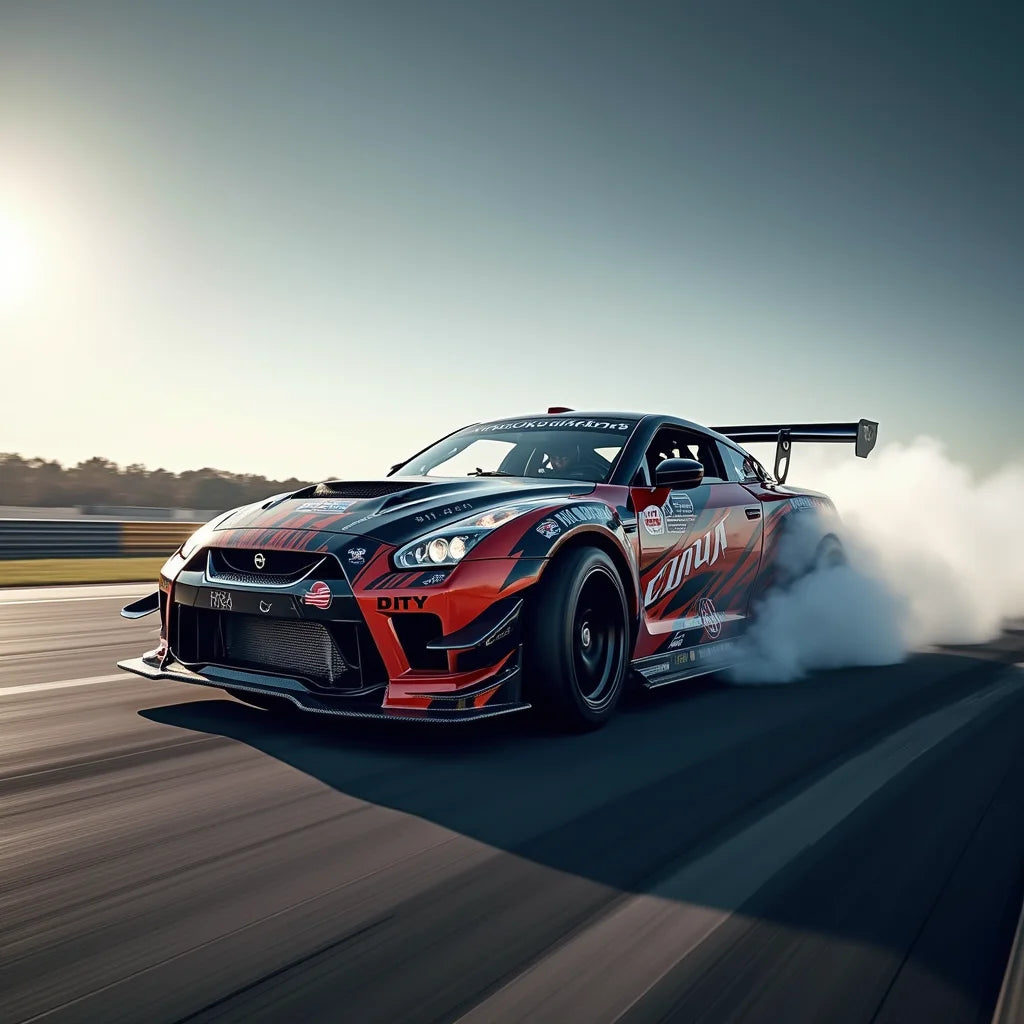
Drift Racing Cars Mastering Balance Power and Tire Grip
Share
Updated on: 2025-09-25
Table of Contents for Drift Racing Cars
- Drift Racing Cars: A Clear Introduction for Curious Drivers
- Drift Racing Cars Myths and Helpful Facts
-
Step-by-Step Drift Racing Cars Setup on a Budget
- Step 1: Choose a Stable, RWD Platform
- Step 2: Prioritize Basic Safety and Reliability
- Step 3: Refresh Fluids and Wear Items
- Step 4: Pick Predictable Tires and Sizes
- Step 5: Set Up Suspension for Control
- Step 6: Improve Traction with the Right Differential
- Step 7: Make the Handbrake Useful
- Step 8: Align and Fine-Tune Your Drift Car Setup
- Step 9: Practice Progression, Even at Small Scale
- Frequently Asked Questions about Drift Racing Cars
- Drift Racing Cars Summary and Key Takeaways
- Community Q&A on Drift Racing Cars
- About the Author: Experience in Drift Racing Cars
Drift Racing Cars: A Clear Introduction for Curious Drivers
Drift Racing Cars are built to slide with control, style, and consistency. Unlike regular performance builds, drift cars (also called drift racing vehicles) focus on predictable oversteer and precise steering response. If you have watched competitive events such as Formula Drift, you have seen how a well-sorted chassis, steady throttle, and smooth transitions work together. For everyday drivers who are curious, the fundamentals are approachable: a stable rear-wheel-drive platform, a balanced drift car setup, and a patient, steady learning plan.
This article aims to help you understand how to start without feeling overwhelmed. You will see common myths addressed, a step-by-step path to plan your first setup, and practical suggestions on how to refine your technique. Whether you want to learn the basics or evaluate the best drift racing cars for beginners, the guidance below offers a careful, respectful way to move forward.
Drift Racing Cars Myths and Helpful Facts
-
Myth: You need a high-horsepower engine to drift.
Fact: Angle, weight transfer, and tire choice matter more at the start. Many drivers learn on modest power with a balanced setup. -
Myth: Drift racing vehicles must be expensive to be competitive.
Fact: A reliable platform, wise maintenance, and simple adjustments can go a long way. Spending wisely often beats spending more. -
Myth: Aggressive coilovers instantly make a car drift-ready.
Fact: Suspension quality helps, but alignment, tire pressures, and driver input are foundational. -
Myth: Only certain famous models can drift well.
Fact: Many rear-wheel-drive cars can become capable drift racing cars with careful setup and practice. -
Myth: Handbrakes are the main way to start every slide.
Fact: Weight transfer and throttle control initiate many drifts. The handbrake is a helpful tool, not the only tool. -
Myth: Track drifting is too risky for beginners.
Fact: Controlled environments with guidance are designed for learning. With patience and respect for rules, beginners can progress safely and steadily.
Step-by-Step Drift Racing Cars Setup on a Budget
Step 1: Choose a Stable, RWD Platform
Pick a widely supported rear-wheel-drive chassis with dependable parts availability. This helps with costs and makes troubleshooting easier. Popular platforms often have strong communities, which means more guidance on drift car setup, alignment baselines, and parts interchange.
Step 2: Prioritize Basic Safety and Reliability
Before upgrades, confirm that brakes, steering, and cooling systems are in good order. Reliability keeps your time on track smooth and reduces stress. If your venue requires safety items such as seats, harnesses, or extinguishers, plan those early so your car meets entry standards.
Step 3: Refresh Fluids and Wear Items
Fresh engine oil, transmission and differential fluids, and brake fluid improve performance and consistency. Replace filters, belts, and hoses that show age. New brake pads and healthy rotors offer reliable stopping, which is essential during initiation and deceleration zones.
Step 4: Pick Predictable Tires and Sizes
Choose a tire with consistent grip and a size that fits your power level. For learning, predictability matters more than peak grip. Keep notes on tire pressures; small adjustments can make transitions smoother and help the car settle as you link corners.
Step 5: Set Up Suspension for Control
Stiffer, quality dampers help control body movement, while matched springs maintain balance. You do not need extreme ride height or springs to begin. Focus on reducing excessive body roll and ensuring the wheels follow the surface well. As you progress, you can explore adjustable arms for extra steering angle.
Step 6: Improve Traction with the Right Differential
A limited-slip differential helps both rear wheels push together, making slides more consistent. It supports controlled exits and smoother transitions. The exact choice depends on your platform and goals, but the aim is predictable lock-up without harshness that upsets the car.
Step 7: Make the Handbrake Useful
A firm, reliable handbrake allows gentle corrections and clean initiations when needed. Some drivers use a hydraulic setup once they advance, but even a well-maintained cable system can be effective at beginner speeds.
Step 8: Align and Fine-Tune Your Drift Car Setup
Alignment is the quiet hero of drift racing cars. A typical beginner-friendly approach uses:
- Front: modest negative camber for grip while turning, a touch of toe-out for quick response, and enough caster for self-steer.
- Rear: near-zero toe for consistent breakaway, and mild negative camber to keep the contact patch stable under load.
Every chassis responds differently, so make one change at a time and record results. These notes become your roadmap.
Step 9: Practice Progression, Even at Small Scale
Seat time builds skill. If track time is limited, small-scale practice can reinforce steering and throttle habits. An accessible option is exploring a compact platform for controlled drills. For example, you may enjoy browsing the RC collection to practice car control concepts at home and then apply the same principles in full-size sessions.
Frequently Asked Questions about Drift Racing Cars
What are the best drift racing cars for beginners?
Many beginners choose rear-wheel-drive platforms with strong parts support and simple mechanics. Cars with balanced weight, responsive steering, and reliable cooling tend to be kind to learners. Look for models with active communities, so you can find drift car setup baselines and troubleshooting guides without guesswork.
How much does it cost to build a drift racing car?
Costs vary by region, platform, and goals. A practical way to plan is by allocating your budget across categories instead of chasing exact numbers: a portion for the chassis, a portion for reliability and maintenance, a portion for tires and wheels, and the remainder for suspension, differential, and alignment. This staged approach keeps spending transparent and helps you learn what brings the most value.
What is Formula Drift and why does it matter?
Formula Drift is a leading professional series for drift racing vehicles. It showcases high-level car control, consistent judging standards, and evolving chassis technology. Watching top drivers can teach you about line, angle, and style, and it often inspires practical adjustments that suit your own car and pace.
Drift Racing Cars Summary and Key Takeaways
Drift racing cars reward smooth inputs, a calm mind, and a measured plan. Power matters, but balance and predictability come first. Begin with a reliable platform, maintain it well, and use alignment and tire choices to shape how the car feels. Practice gently, refine one variable at a time, and let your notes guide your next step.
- Start simple: reliability and alignment often bring the largest gains.
- Use a staged budget so each upgrade has a clear purpose.
- Observe professional driving to learn line and timing, then adapt at your own speed.
- Consider small-scale practice to reinforce techniques between track days; some find a compact drift platform like the Turbo Drift car valuable for learning transitions and throttle modulation.
If you are exploring product options that echo real-world handling, you might also like the Turbo G‑T for precise steering feel or the Turbo Truck for a different balance and weight transfer style.
Community Q&A on Drift Racing Cars
Do I need a lot of power to start drifting?
No. Drift racing cars benefit more from balance, steering angle, and predictable tires than from big power, especially at the beginning. As your technique improves, you can decide if extra power supports your goals.
Is a manual transmission required for drift racing vehicles?
Manual gearboxes are popular because they give direct control over gear selection and clutch use. However, some automatic setups work well too. The key is consistent response and gearing that suits your chosen track layout.
Which upgrades should come first on a budget build?
Reliability comes first, followed by alignment and tires. Suspension and differential choices come next. This order helps you feel each change, learn more from every session, and avoid unnecessary spending.
About the Author: Experience in Drift Racing Cars
TURBO DRIFT™ TURBO DRIFT™
TURBO DRIFT™ TURBO DRIFT™ shares practical insights on drift racing cars, setup basics, and beginner-friendly learning paths. With a focus on clarity and empathy, the goal is to make drifting approachable and enjoyable. Thank you for reading, and please feel welcome to explore more resources at your own pace.
